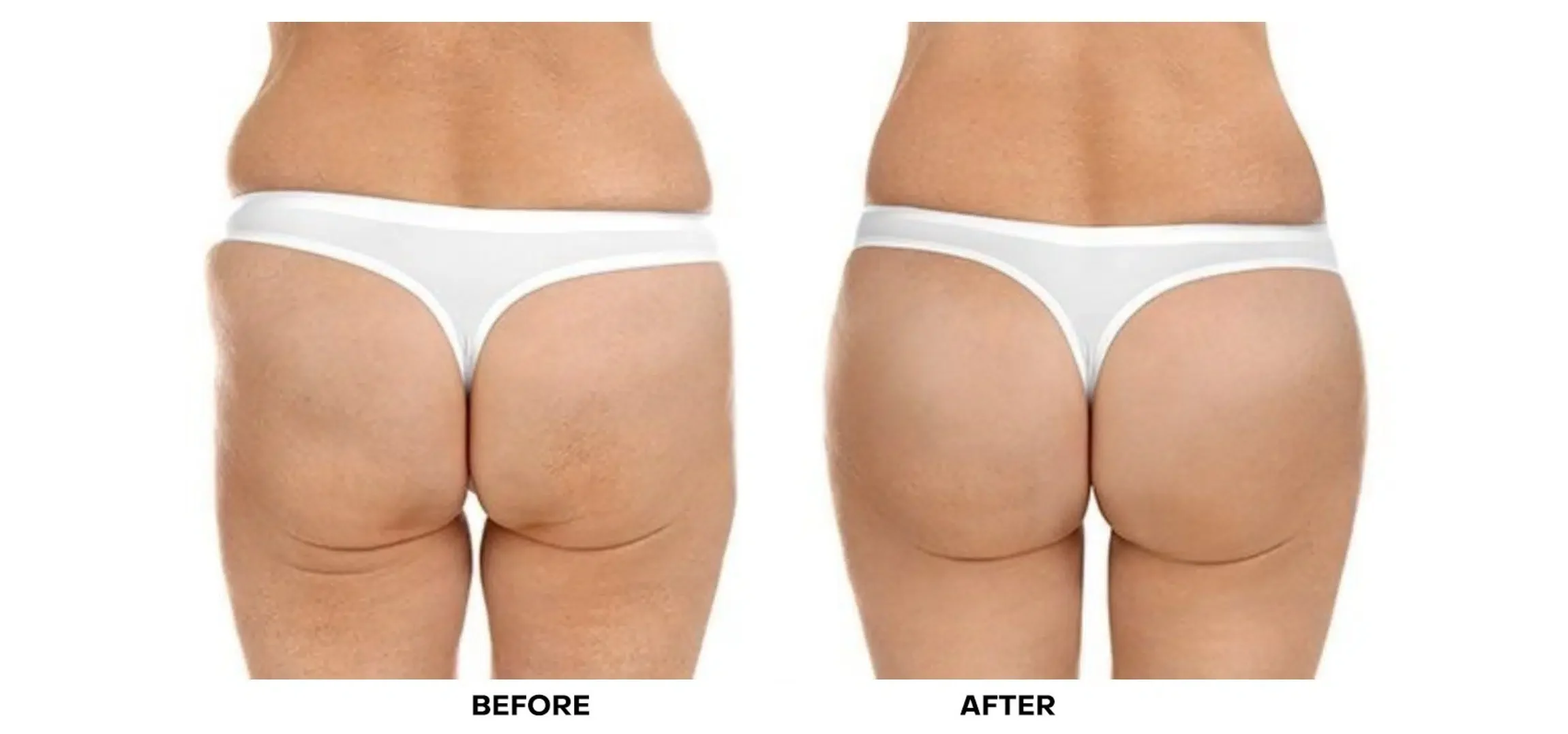
The desire for a fuller, more contoured gluteal region has historically driven demand for surgical interventions, primarily the Brazilian Butt Lift (BBL). However, the associated risks, recovery time, and permanence of surgery have fueled a substantial market for non-invasive alternatives. The term “non-invasive butt lift” encompasses a diverse array of treatments, ranging from injectable biostimulators and dermal fillers to energy-based devices utilizing radiofrequency, ultrasound, or electromagnetic technology. These procedures promise enhancement with minimal to no downtime, positioning them as appealing options for individuals seeking subtle improvement without the commitment or risks of general anesthesia. Yet, the question of efficacy remains highly complex. It’s crucial to understand that these non-surgical methods operate on fundamentally different principles than fat grafting; they do not introduce new, living tissue or permanently remove large volumes of fat from surrounding areas. Instead, they rely on stimulating the body’s natural processes or temporarily adding volume with synthetic materials. Assessing their true value requires a nuanced look at the specific technology, the biology of the tissue response, and the realistic outcomes achievable compared to surgical standards.
The Question of Efficacy Remains Highly Complex
Among the most talked-about non-invasive methods is the use of injectable biostimulators, such as poly-L-lactic acid (PLLA), often marketed as a means to achieve gradual, natural-looking volume. These substances are not traditional dermal fillers that provide immediate bulk; rather, they are designed to instigate a long-term tissue response. Once injected into the deep dermis or subcutaneous tissue, the PLLA particles are gradually absorbed while simultaneously triggering the body’s fibroblasts to produce new collagen. This new collagen synthesis provides the structural scaffolding necessary for subtle volume expansion and improvement in skin texture and firmness over a period of several months. The result is often an improvement in the curvature and firmness of the buttocks, but this enhancement is inherently limited by the individual’s biological response and the amount of product that can be safely injected. Typically, multiple treatment sessions, spaced several weeks apart, are required to achieve a noticeable difference, making it a commitment in terms of both time and financial investment.
They Are Designed to Instigate a Long-Term Tissue Response
Another major category within non-invasive butt enhancement involves large-volume dermal fillers, most notably hyaluronic acid (HA) and polymethyl-methacrylate (PMMA) based compounds. Unlike biostimulators, these injectables provide an immediate, albeit temporary, volume increase. The hyaluronic acid fillers work by attracting and binding water molecules, instantly plumping the injected area. While the effect is immediate, the high cost of the vast quantities of product required for buttock augmentation makes this a financially demanding option, and the duration of effect is typically limited, necessitating repeated, costly maintenance treatments. The use of very large volumes of any filler in the gluteal region also introduces specific safety considerations, including the risk of infection, product migration, and the potential for granuloma formation. Practitioners must possess an exceptional understanding of gluteal anatomy to avoid complications associated with large-volume, off-label filler usage in this high-mobility, weight-bearing area.
Practitioners Must Possess an Exceptional Understanding of Gluteal Anatomy to Avoid Complications
Energy-based devices offer a completely different approach, relying on external application rather than internal injection. Radiofrequency (RF) and high-intensity focused ultrasound (HIFU) devices target the deeper layers of the skin and the superficial fat. The thermal energy delivered by these machines is intended to cause controlled damage to the tissue, prompting a tightening and remodeling response. Radiofrequency energy, for example, heats the collagen fibers in the skin, causing them to contract immediately, and over time, stimulates new collagen production, leading to a modest lifting and firming effect. This can improve the appearance of the buttocks by tightening lax skin but will not add any significant volume or projection. The efficacy is therefore limited to addressing issues of skin quality and mild contour irregularities, falling short of the dramatic volume shifts achievable with fat transfer. This makes them suitable for a very specific subset of patients whose primary concern is skin laxity rather than sheer size.
High-Intensity Focused Ultrasound Devices Work by Inducing Supramaximal Muscle Contractions
A newer class of technology, High-Intensity Focused Ultrasound devices work by inducing supramaximal muscle contractions—contractions that are significantly more powerful than anything a person can achieve voluntarily during exercise. These electromagnetic devices, used in sessions lasting about 30 minutes, force the gluteal muscles (specifically the gluteus maximus and medius) to contract thousands of times, promoting muscle building and fat metabolism in the targeted area. The claim is that this intensive workout builds muscle mass, which in turn provides a subtle lift and increased definition to the gluteal contour. While studies confirm an increase in muscle density and a corresponding small reduction in localized fat, the ultimate aesthetic change is constrained by the patient’s existing muscular and skeletal anatomy. This approach is most effective for individuals who are already in good physical condition but seek a final refinement in tone and modest projection that traditional workouts struggle to deliver. It is fundamentally a method of muscle conditioning, not volume addition.
Assessing the True Value of These Procedures Requires Realism
A critical point that underpins the entire non-invasive sector is the inherent limitation in the degree of augmentation possible. Assessing the true value of these procedures requires realism regarding patient expectations. Non-invasive treatments, by their nature, cannot safely transplant the massive volumes of adipose tissue that are routinely moved during a surgical BBL. They are tools for subtle refinement, minor contour correction, and skin quality improvement. The maximum safe volume for injectable fillers or biostimulators is constrained by tissue tolerance and vascular risk, making the creation of a dramatic hourglass figure or significant projection unrealistic. Patients must understand that while the recovery from these methods is negligible, the resulting aesthetic change is commensurately minor. These methods are best suited for patients with already reasonable existing contours who desire a 10% to 20% improvement in lift, firmness, or subtle shape, not a transformative change in size.
The Financial Cost Over Time Can Quickly Outstrip Surgery
Considering the necessity for repeat sessions and maintenance, the financial cost over time can quickly outstrip surgery. While the upfront price of a single non-invasive session is significantly lower than a surgical procedure, the accumulative cost must be calculated honestly. Biostimulators require multiple initial treatments and potentially yearly touch-ups. High-volume HA fillers demand massive product quantities every year or two. Muscle-stimulation devices mandate a series of initial sessions followed by maintenance protocols. When these long-term expenses are tallied, the total expenditure over a five-to-ten-year period can easily exceed the cost of a single, well-executed BBL, especially when factoring in the time lost to multiple appointments. This long-term financial reality often shifts the cost-benefit analysis in favor of the single-procedure surgical route for those seeking a larger, permanent result.
Patient Selection is the Single Most Important Factor for Success
In the realm of non-invasive procedures, patient selection is the single most important factor for success and satisfaction. A good candidate for non-surgical enhancement typically has mild skin laxity, excellent skin elasticity, and realistic expectations regarding the volume change. Conversely, individuals with significant skin excess, dramatic asymmetry, or a desire for a huge increase in projection are inherently poor candidates for these modalities and are often best served by surgical intervention. Attempting to force a major aesthetic change through non-invasive means on an inappropriate candidate invariably leads to disappointment, unnecessary expense, and potentially even dissatisfaction with the plastic surgeon or aesthetic practitioner, further underscoring the necessity of honest, pre-treatment counseling.
The Long-Term Safety Profile for Very Large Volumes of Injectable Fillers Remains Under Scrutiny
Another area that requires careful consideration is the long-term safety of some injectable products. While materials like PLLA and HA have established safety records in smaller volumes for facial aesthetics, the long-term safety profile for very large volumes of injectable fillers remains under scrutiny in the gluteal region. The risk of delayed complications, such as chronic inflammation, indurations (hardening of tissue), foreign body reactions, and the difficulty of removing a misplaced or complicated product, are directly proportional to the volume and density of the injected substance. The gluteal region, with its dense network of nerves and vessels, requires a practitioner with specialized training to minimize vascular compromise and nerve damage. The true safety of these large-volume injectable protocols is an ongoing conversation within the aesthetic medical community, urging extreme caution and adherence to best practice guidelines.
The Effectiveness of Any Non-Surgical Method is Fundamentally Temporary
Irrespective of the technology or material used, the effectiveness of any non-surgical method is fundamentally temporary and requires ongoing intervention. Biostimulators rely on the body’s natural processes, which eventually subside. Fillers are naturally absorbed over time. Muscle-building technologies require continuous maintenance sessions to prevent atrophy. This contrasts sharply with autologous fat grafting, where the transplanted fat cells that successfully establish a blood supply become permanent, living tissue that swells and shrinks with the rest of the body. This difference in permanence is the most crucial consideration for patients. Non-invasive treatments are a commitment to an ongoing treatment plan, whereas a successful surgical BBL is a commitment to a single, transformative procedure followed by lifestyle maintenance.
The Ideal Approach May Be a Hybrid Combination of Techniques
Ultimately, the best approach for a patient is rarely an either/or decision. The ideal approach may be a hybrid combination of techniques—a testament to the personalized nature of modern aesthetic medicine. For a patient who has undergone a successful BBL, a non-invasive RF treatment might be used years later to address mild skin laxity that has developed due to aging. For a patient who is too lean for a BBL but desires improved tone, the electromagnetic muscle stimulation device might be the perfect fit. The most sophisticated practitioners are now integrating the strengths of both surgery and non-invasive methods, using one to complement the other, rather than pitching them as direct competitors. This integrated strategy aims to maximize the aesthetic outcome and longevity for the patient, leveraging the specific biological mechanisms of each technology optimally.
